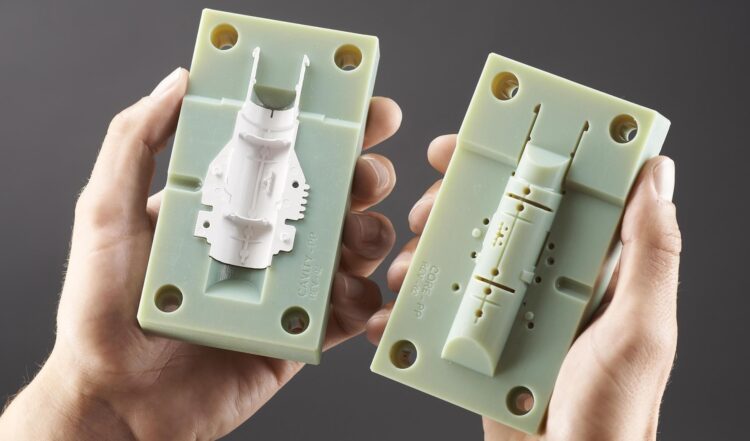Innovation drives the world forward. One of the most important innovations of the 20th century is plastic molding. Plastic molds are expensive. But they make it easier for manufacturers to repeat the process by having a prototype to reuse.
Starting with plastic molds will cost you. Simply making the blueprint will cost you anywhere between a few hundred dollars to hundreds of thousands of dollars. This all depends on what you’re hoping to produce. Smaller parts are less expensive, while larger parts are naturally more expensive to mold.
But is that the only reason why plastic blueprints are so expensive? We will look at the many factors that impact price in this 2024 guide.
Page Contents
Costs In Plastic Molding
To mass-produce a part, you will need something called injection molding. This is a process that we briefly explained before. This process saves you time and money and is a process that can be repeated indefinitely.
But to get there, you will need to understand the starting costs. So here are all the costs associated with plastic molding.
1. Equipment

Source: sealectplastics.com
You can’t mass-produce a certain part without having the equipment or machines to do so. These machines aren’t your usual run-of-the-mill production machines. They are special-purpose machines that come in different sizes.
As such, the bigger the machine, the more it will cost you. These machines are also capable of producing more parts. Desktop injection machines cost less, but they aren’t capable of sustaining a large industry.
For that, you need big machines with plenty of production power. These can cost up to $200,000. They come with a wide range of features and can work 24/7. But that’s what you’re paying for the machine. There are other types of costs to consider. Let’s see why making plastic molds is more expensive and why so much goes into making one.
2. Manpower

Source: ennomotive.com
Even if these machines can work 24/7, not every machine can work without an operator. As such, you will need to hire personnel and train them to use them.
Depending on where you live, manpower costs will drastically vary. In the US, the average salary for a plastic injection machine operator comes just below $2,500. In other parts of the world, the cost to hire an operator will be much lower. This is why US businesses tend to open production facilities in poorer countries where the average salary is much lower.
But that doesn’t mean the workers will be less skilled. Every business makes sure they’re getting the most out of their workers. To do that, it’s essential to train them on how to use, maintain, and monitor these machines.
As one might imagine, a business will have to invest and train its workers. These courses can cost anywhere between a thousand dollars to tens of thousands of dollars.
3. Tooling Costs

Source: industrytoday.com
Before you even begin production, you will need the tools necessary to create the plastic mold. While big machines are responsible for making the parts, you will need another machine to create the blueprint itself.
These machines are more commonly referred to in the industry as tools. Depending on what sort of material you’re using for the mold, there are a few to look at.
Since we’re talking about plastic, the machines you’re looking for are called molding presses. Depending on what you need the tool for and how complex the part will be, these can cost anywhere from a few thousand dollars to hundreds of thousands of dollars. These machines create the plastic mold. The mold is then used by other machines to create the part.
Since these machines cost a lot, most businesses outsource them. Instead of paying tens of thousands of dollars for a plastic mold, you can hire an expert that has all the equipment necessary to do that for you.
Regardless if you need large injection molds, plastic molds, or insert molds, you can visit https://www.rydtooling.com/product-item/large-mold/ for more information.
4. Mould Material Costs

Source: protoplastics.com
By now you’re probably aware that starting a plastic mold business is very expensive. Plastic molds cost a lot of money to make, but even so, we aren’t finished with the costs.
While equipment, manpower, and tools make up most of the costs, you will also need to provide the materials to create the mold itself. Since this is essentially a blueprint that you’ll use over and over again, it must be made using the most durable material to withstand thousands of pounds of pressure every production cycle. So what material is best used for that? Steel is the go-to material for creating plastic molds. Steel is very durable and doesn’t buckle under high pressure.
But steel on its own isn’t enough. You will need a higher grade of steel to ensure durability. This is where it gets tricky. A large factor to consider is the complexity of the part. If the part is too complex, you’ll need to spend more to perfect the material. Once you create the mold, you cannot go back.
This is why you think about every small detail before creating the blueprint for the part. Since they are so expensive, the last thing you want is to modify the design. To do that, you would have to repeat the process all over again.
5. Complexity Of the Part

Source: easchangesystems.com
And the last reason why plastic molds are so expensive has to do with the complexity of the part. If the part is more complex to produce, then you will spend more money creating the blueprint.
We touched on this in the previous section, but it’s important to clarify why. Coming up with a design that involves hundreds of other parts is difficult to make. For complex parts, you will need to come up with a complex mold.
Chances are, you won’t create the blueprint on your first try. This is why professionals make multiple designs and buy multiple molds to find the one that works.
Since we’ve already touched on why these cost a small fortune, complex parts mean using more than one mold until you get the desired outcome.





